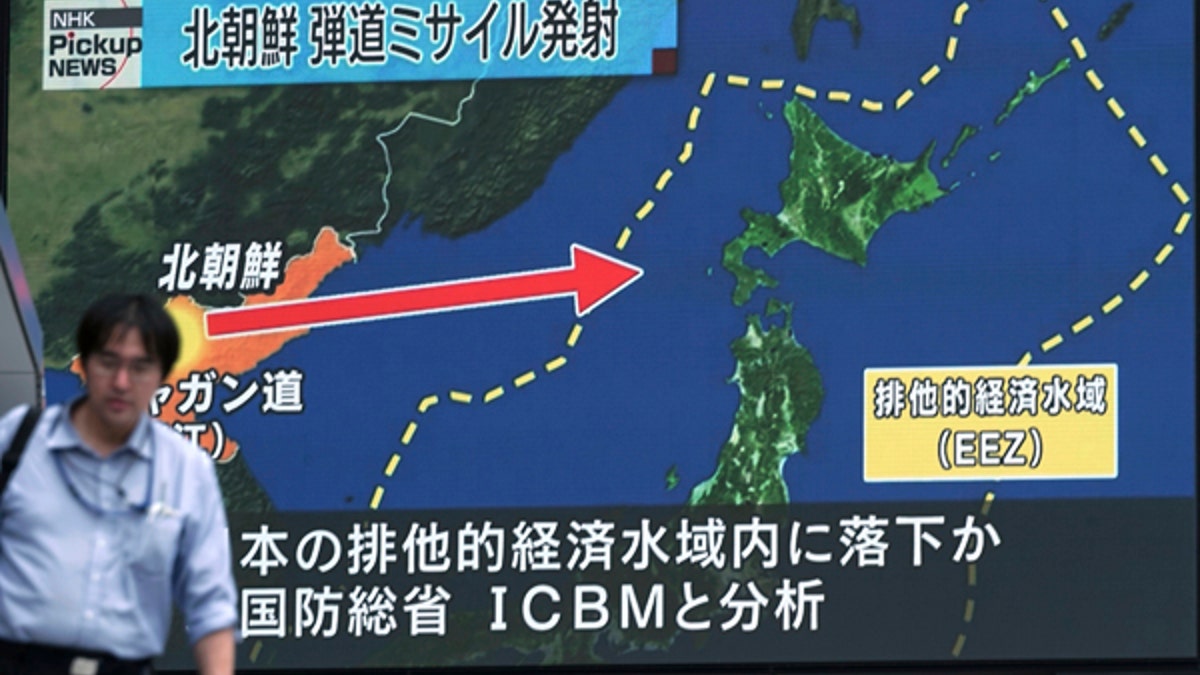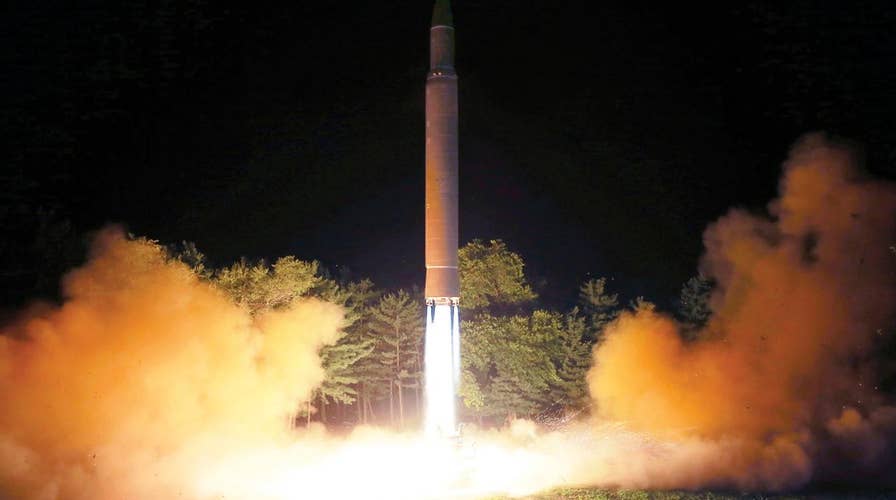Officials say US in range for some North Korean missiles
Lucas Tomlinson reports from the Pentagon
North Korea may have finally developed a missile capable of hitting the U.S., but whether it can do any actual damage is open for debate, according to some analysts.
U.S. and South Korean experts said Tuesday that Japanese video footage capturing the Hwasong-14's re-entry vehicle shortly before it crashed into the sea suggests it failed to survive the extreme heat and pressure after re-entering the Earth's atmosphere following its launch from northern North Korea last week.
The apparent failure likely means the rogue regime will conduct more flight tests of the Hwasong-14 missile to ensure the warhead could survive the re-entry from space and hit its intended target.
After analyzing video from a rooftop camera operated by Japan's NHK television on the northern island of Hokkaido, U.S. missile expert Michael Elleman concluded that Hwasong-14's re-entry vehicle "disintegrated" before it landed at sea.
"In short, a reasonable conclusion based on the video evidence is that the Hwasong-14's re-entry vehicle did not survive during its second test," Elleman, an expert with the International Institute for Strategic Studies said in an article on the research website 38 North. "If this assessment accurately reflects reality, North Korea's engineers have yet to master re-entry technologies and more work remains before Kim Jong Un has an ICBM capable of striking the American mainland."

A man walks in front of a public TV screen broadcasting news of North Korea's test-firing of its second intercontinental ballistic missile, in Tokyo, Japan. The ticker above reads: "North Korea fired ICBM missile." (AP Photo/Eugene Hoshiko, File)
Elleman said the video showed the re-entry vehicle shedding small radiant objects at an altitude of 2.5 to 3 miles and that it dims and quickly disappears at an altitude of 1.9 to 2.5 miles before it passes behind a mountain range and is obscured from the camera's view. Had the re-entry vehicle survived, it would have continued to glow until disappearing behind the mountains, he claims.
The missile expert told reporters on a recent conference call organized by 38 North, that fixing the design flaw “might take them another six months,” according to The New York Times. “But the key is that they’ll have to do additional flight tests.”
While North Korea has declared that the Hwasong-14's latest launch confirmed important features of the missile, such as its range and the warhead's atmospheric re-entry, it also described the rocket as "landing in the target waters in the open sea."
It probably wasn't an ideal outcome for North Korean engineers because nuclear warheads are usually designed to detonate at lower altitudes shortly before impact, Kim Dong-yub, a defense analyst at the Institute for Far Eastern Studies at Kyungnam University in Seoul, said to The Associated Press.
"Considering the cost and efforts they put into tests, North Korea likely would have tried to detonate the warhead properly; they apparently failed this time, but could focus on this aspect in future tests," Kim said. "Mastering re-entry is among the most critical military milestones the North has left, along with developing submarine-launched ballistic missile system and solid-fuel ICBMs."
The Associated Press contributed to this story.





















